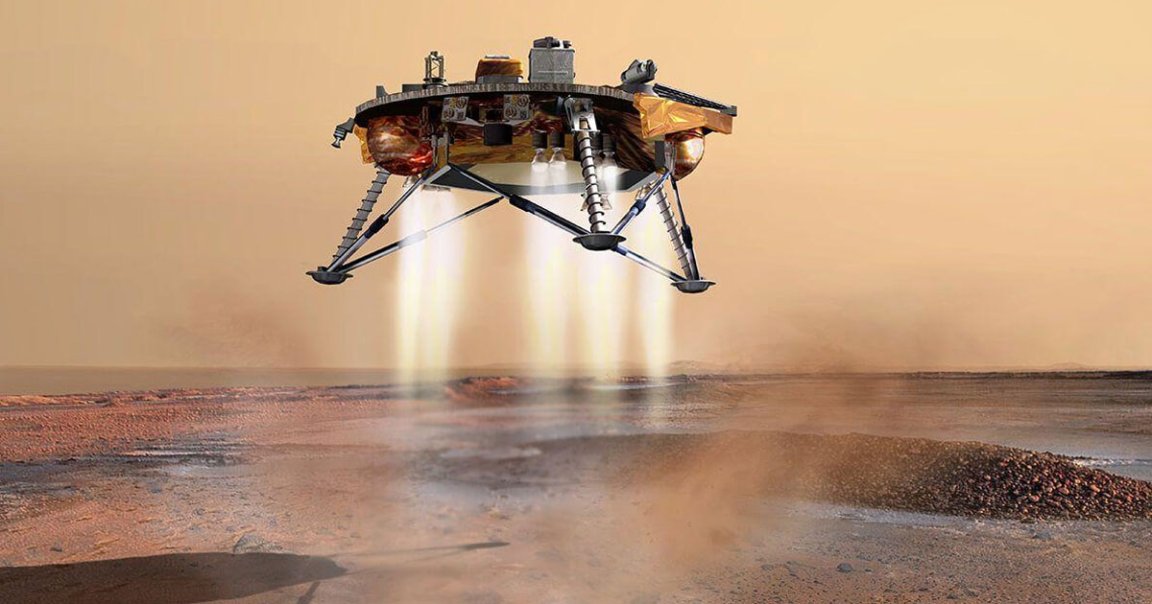
Seven Minutes of Terror
Landing a spacecraft on the surface of Mars is a Herculean task. Payloads reach hypersonic speeds as they heat up while entering the Martian atmosphere — the reason scientists have referred to it as the “seven minutes of terror.”
Many spacecraft have slowed their descents to Mars using large parachutes. But landing heavier spacecraft on the Red Planet, like those with a human crew, will pose new engineering challenges, according to new research — and a potential solution could involve a harrowing nose dive.
Bigger Rockets
“Unfortunately, parachute systems do not scale well with increasing vehicle mass,” said assistant professor in the Department of Aerospace Engineering at the University of Illinois Zach Putnam in a press release. “The new idea is to eliminate the parachute and use larger rocket engines for descent.”
The paper Putnam co-authored about optimizing the trajectories that Mars landers should take on descent was published in the Journal of Spacecraft and Rockets.
There’s another issue that comes along with larger rockets: more valuable space used up by additional rocket fuel. And that’s space that could be used for scientific instruments or even human passengers.
Flying Low
Luckily, there might be a middle ground: pre-determined trajectories could minimize the need for massive parachutes or giant tanks of additional propellants to fire descent system rockets.
To pull that off, the vehicle would have to dive down, then turn its nose up just at the right time to fly over the Martian surface at a low altitude.
“This enables the vehicle to spend more time flying low where the atmospheric density is higher,” Putnam said. “This increases the drag, reducing the amount of energy that must be removed by the descent engines.”
READ MORE: Developing a Flight Strategy to Land Heavier Vehicles on Mars [University of Illinois]
More on landing on Mars: Breaking: NASA’s InSight Lander Just Landed on Mars